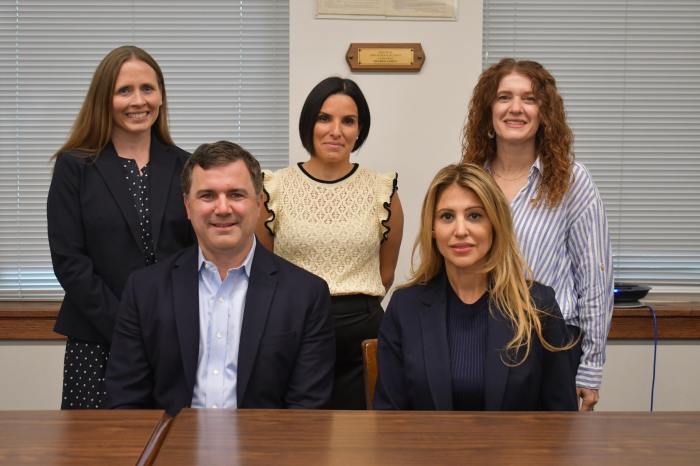Addressing a district goal for the 2013-14 school year – “Investigate other models for student assessment” – Garden City High School administered OECD’s (Organization for Economic Co-Development: http://www.oecd.org/) PISA (Progamme for International Student Assessment: http://www.oecd.org/pisa/) last spring to 58 15-year old Garden City High School students who were selected at random by OECD to take the test.
OECD proctored and scored the exam, and provided an in-depth analysis of the results. Nine other high schools on Long Island also took the test.
PISA is unlike many other assessments because it assesses student ability to apply skills and understandings rather than merely the recall of a particular set of information or course content. These skills and understandings represent expert opinion about what is required to achieve success in a global, 21st century environment. The test focuses on three areas - reading, mathematics and science – and provides schools with a valuable international benchmark of student achievement. The assessment also provides information concerning how Garden City students performed in comparison to public and private schools across the United States, schools similar to Garden City, and schools in 65 counties around the world. A student survey included as part of the test asked students to rate classroom atmosphere, student-teacher relationships, “self-efficacy” (a student’s belief that they can succeed in the subject), and motivation.
The full report to the Board of Education is available on the district website: www.gardencity.k12.ny.us. Look for “Board News” on the side bar on the right side of the district home page, and then click on “Presentations.”
The Results:
Garden City students far surpassed the levels attained by students nationally, consistently scoring within the top 10 percent of the top performing schools in the U.S. and, in many cases, outperforming countries/cities like Finland, Singapore, and Shanghai, China, known for topping the charts on international exams.
Highlights include:
• Overall, Garden City students outperformed all U.S. public and private schools and all OECD schools in reading, mathematics and science.
• In Level of Proficiency scores (below 1 through 6 – with 6 representing questions of extreme difficulty/complexity) in the three content areas:
• Reading – 7 percent of Garden City students scored at Levels 5 & 6 (considered the “Top Levels”). The U.S. average was 10 percent for Levels 5 & 6; 93 percent scored at “Intermediate Levels” (Levels 2 – 4); 0 percent scored “Below baseline” (Level 1 and below)
• Mathematics – 27 percent scored at Top Levels (U.S. was 10 percent); 71 percent scored Intermediate; 2 percent Below baseline
• Science – 9 percent scored at Top Levels (U.S. was 7 percent); 91 percent scored Intermediate; 0 percent scored Below baseline
• In Reading Proficiency:
• Nationally – the highest percentage (52 percent) of Garden City students scored at Level 4 (U.S. was 21 percent).
• Internationally – Garden City students scored above students in Shanghai, Korea, and Finland
• In Math Proficiency:
• Nationally – the highest percentage of Garden City students (29 percent) scored at Level 4 with 55 percent scoring 4 and above (U.S. was 30 percent)
• Internationally – Garden City students’ scores were below Shanghai, on par with Singapore, and above Korea and Finland
• In Science Proficiency:
• Nationally – 54 percent of Garden City students scored at or above Level 4 (20 percent and 8 percent scored at 4 and 5 respectively in the U.S.)
• Internationally – Garden City students’ scores were below Shanghai and above Finland and Singapore
• Reading Habits: 81 percent of Garden City students (compared with 67 percent in U.S.) are “deep and wide readers” (students who have high levels of awareness about effective learning strategies and who also read all sorts of materials, including fiction and non-fiction books for enjoyment)
• The student survey indicated that the high school provides a stimulating, well structured, and friendly environment for learning. Students:
• Reported excellent classroom climate
• Felt they received high levels of teacher support
• Held high “self-efficacy” beliefs
• Did not read for pleasure as much as anticipated
• Demonstrated a commitment to their studies, but did not always see the direct connections between their class work in mathematics and science and their future goals
It was emphasized that Garden City’s participation in the PISA assessment was entirely voluntary. The school district viewed the experience as an opportunity to gain valuable insights about student performance on academic tasks and learn about how students feel about their school. Although the report can by no means be considered definitive, several follow-up activities are planned.
• Action steps include:
• Increase the number of students performing at the highest levels of proficiency
• Help students understand how math and science connect not only to careers but to successful participation in 21st century community life
• Encourage more students to be “deep and wide readers”
• Consider participating in a future administration of the exam.
For the complete PISA report, visit: http://gc.schoolwires.net/cms/lib8/NY01913305/Centricity/Domain/4/OECD_Garden_district_1046_school_10069_f13.pdf
Submitted by Garden City Public Schools

































